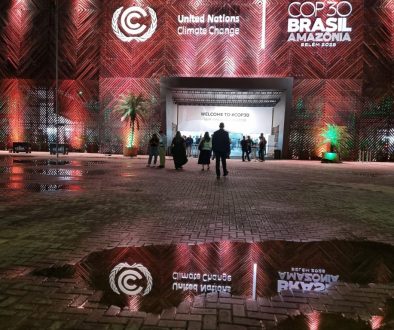Finding the balance – why virgin and recycled fibres both have a place in paper, packaging and print
The sustainability of packaging production is a critical and ongoing consideration by consumers, retailers and brand owners. While the pursuit of environmental friendliness – or the appearance of it – drives the push towards more recycled fibres, virgin or new fibres are still essential in the manufacturing of high-quality, durable, and sustainable paper products.
Determining a proper mix of virgin and recycled fibres is a nuanced process. While some argue for exclusively recycled content to “save trees”, the demand for wood fibre is also a driving force in maintaining healthy forest ecosystems.
Jane Molony, executive director of the Paper Manufacturers Association of South Africa (PAMSA) explains that both virgin and recycled fibres bring unique strengths to the table. “The fibre from recycled paper contributes to the circular economy, reducing the need for fresh raw materials, in our case virgin fibre.” She adds, however, that this should not be confused with “saving trees”.
“In South Africa, virgin fibre for pulp, paper and packaging is sourced from sustainably farmed trees grown in plantations,” says Molony, adding that only 10% of the total planted area is harvested each year and replanted within 12 months, making this fibre a renewable resource.
“We also have forest certification programmes such as the Sustainable African Forest Assurance Scheme, the Forest Stewardship Council and the Programme for the Endorsement of Forest Certification that keep forest owners accountable,” notes Molony, addin that well-managed plantations are, by nature, sustainable.
Paper is also a reliably recycled material. Over the past decade, the South African paper industry has recovered an average 66% (around 1.1 million tonnes) of all recoverable paper used in South Africa on an annual basis. This includes newspapers and magazines, corrugated and paperboard packaging, office papers and mixed waste paper. (Recoverable paper excludes the likes of tissue products which is unsuitable or not possible to recover, as well as packaging that is used for export of goods.)
The Cycle of Paper
Each time paper is recycled, the fibres making up the product get shorter and weaker, eventually degrading to the point where they are unable to bond into new paper.
This is why virgin fibres from sustainable sources offer essential qualities like strength, durability and brightness, and are continually introduced into the system.
This also means that products do not have to contain 100% recycled content to be considered “sustainable”. Recycled fibre originated from virgin fibre that made up the paper product that was recycled in the first place.
Fibre and Functionality
Both virgin and recycled paper offer alternatives to electronic forms of communication that have their own environmental impact, such as e-waste and energy use. A balanced approach acknowledges the need for both sustainable forest management alongside recycling efforts.
Choosing whether to use recycled or virgin paper typically comes down to the type of use.
The wrong mix of recycled and virgin fibres will affect paper’s ability to run smoothly through a press or printer and take up ink and other coatings. Ink saturation, registration and brightness may all be affected, creating a different type of end product depending upon the intended use.
Breaking and separating fibres during recycling affects the paper’s durability and surface area, and recycled paper products can only be “downcycled,” which means a corrugated box cannot be made into bright white paper, but higher quality paper can be made into recycled packaging grades.
South African paper manufacturers do not make recycled printing paper locally, which means companies insisting on recycled paper for their documents will need to import it. This comes with a carbon footprint.
Increasing Consumer Awareness
Educating consumers about the benefits of a balanced mix of virgin and recycled fibres and the role the paper industry plays in environmental stewardship is essential.
Understanding that responsible paper production involves a thoughtful combination of these fibres can empower consumers to make environmentally conscious choices that truly support sustainable practices within the industry.
The union of virgin and recycled fibres in paper and paper-based packaging production is not just a compromise; it’s a strategic alliance embodying the principles of sustainability, quality, and versatility. By striking the right balance, the paper industry can contribute significantly to a circular economy while meeting the diverse needs of consumers and businesses alike.




